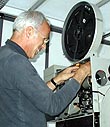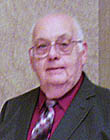|
|
This topic comprises 2 pages: 1 2
|
|
Author
|
Topic: Excesssive dynamic range in "Dirty Dancing"?
|
|
|
|
|
|
|
|
|
|
|
Jack Ondracek
Film God

Posts: 2348
From: Port Orchard, WA, USA
Registered: Oct 2002
|
 posted 08-26-2007 10:20 AM
posted 08-26-2007 10:20 AM





George:
I ran unprocessed Dolby for years. Back when we were just transitioning from those window speakers, even unprocessed audio sounded better.
You really set your own baseline at a drive-in, because in a sense, each car is it's own "mini auditorium". Each of them has separate, horrible acoustics, so you can't adjust for that like you would a single-room sound system. Some patrons take the speakers out of the cars and set them on the roofs... so what IS normal, and how do you set your system up for it? Added to the challenge, the occupants of those cars have most likely been listening to excessively-processed FM radio stations, so any attempt on your part to expand that dynamic range only makes YOU sound strange.
At lower levels, the companding in SR brings background sounds up close to dialog levels and makes it difficult to separate them. At higher levels, the dynamics force people to constantly twiddle with their volume controls. Without decoding, you can't do anything about the way frequencies are rebalanced in the sound track. Some try to tone the highs down with equalization, but it'll always sound a little strange.
If you watch a scene where two people are on a sidewalk, trying to have a conversation near traffic, you'll immediately recognize this. Even with only a few cars going by, they always seem to sound like they're in downtown New York, and all the cars are 2 feet from the actors, who don't seem to notice.
The best solution I've found is to use properly decoded audio, mix the channels down to the two you need, then use some compression to reduce the dynamic range to suit the environment. That might seem contradictory, but it works.
SR decoding will restore the frequency AND dynamic balance, since the encoding process is based on both. However, at that point you have a process that can generate close to 80dB range at the outputs. FM can't handle much more than about 40, and the audio processing most stations use reduces that even more. Few films actually make use of that much range, but it's still much more than you can handle in a car or outdoor setting. If you set your audio for good dialog levels, quiet passages won't be heard, and loud noises can either clip or at worst, possibly damage a sound system.
The environment you're running your films in is hostile to dynamic range. In both outdoor and in-car environments you have higher ambient noise... traffic, conversation, animals, kids. Reducing the dynamics through compression will keep low passages at a level where they can be heard, while controlling those noisy songs and eliminating most of that knob-twiddling. In an outdoor setting, audio much more than about 20dB below a listenable level will be lucky to be heard past the front row, so the same approach is valid. The highly-processed rock stations many people consider "normal sounding" have a dynamic range of about 2 dB. At higher levels these stations will hurt your ears fast... but you can turn them down to almost nothing and hear everything over all your ambient noise because of the non-existent dynamics. Finding the balance that suits you is a matter of personal choice and opinion. Everybody has one, but you get to decide what's best.
Use a mixer with active inputs to mix your channels down to the two you need. Behringer makes some rack-mount and portable models that are inexpensive and work well for this application. Hook your left audio to a left-panned channel, and your right to a right. Use mono inputs for center, surround and subwoofer channels, if you use them, and pan them to the center. IF you eventually get digital sound (like with a Dolby or DTS processor) and want your surrounds mixed in, those will need to be routed left and right, but not with the single-channel surround of analog SR.
Now you have the ability to balance your audio and bring dialog up a couple of dB, if you need to.
Good compressors are everywhere. Symetrix, DBX and Behringer make good single-band models. I have the Broadcast Warehouse DSPXtra systems here, because I prefer the way multiband units sound.
Some FM transmitters have compressor/limiters in them, including those made by Broadcast Warehouse. They're mainly good for keeping modulation levels within limits, but are also used with some success for the dynamics processing you'll need. While the internal compressor doesn't go far enough for me, they're much better than nothing and quite a few drive-in operators are happy with them as they are.
Hope some of that helps.
| IP: Logged
|
|
|
|
|
|
|
|
|
|
|
|
|
|
|
|
|
|
|
|
|
|
All times are Central (GMT -6:00)
|
This topic comprises 2 pages: 1 2
|
Powered by Infopop Corporation
UBB.classicTM
6.3.1.2
The Film-Tech Forums are designed for various members related to the cinema industry to express their opinions, viewpoints and testimonials on various products, services and events based upon speculation, personal knowledge and factual information through use, therefore all views represented here allow no liability upon the publishers of this web site and the owners of said views assume no liability for any ill will resulting from these postings. The posts made here are for educational as well as entertainment purposes and as such anyone viewing this portion of the website must accept these views as statements of the author of that opinion
and agrees to release the authors from any and all liability.
|

 Home
Home
 Products
Products
 Store
Store
 Forum
Forum
 Warehouse
Warehouse
 Contact Us
Contact Us




 Printer-friendly view of this topic
Printer-friendly view of this topic







![[beer]](graemlins/beer.gif)




![[Big Grin]](biggrin.gif)







